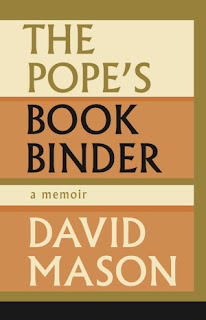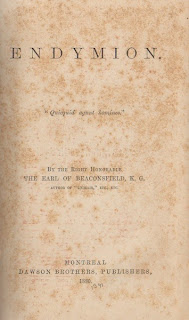Flee the Night in Anger
Dan Keller [pseud. Louis Kaufman]
Toronto: Studio Publications, 1952
The name's Danny Keller, ex-convict, three years for manslaughter. I hit a man. He fell and struck his head on a fire hydrant. He was a rat. I'm not sorry he's dead, but I'd rather be dead beside him than do time again.
It's not such a bad beginning, but as with so many post-war noir novels the writer just can't keep it up. Twenty pages in, with three hundred to go, I'd become much more interested in the back cover:
Is the man in the photo Louis Kaufman? Did Kaufman really serve in the RCAF? Did he enjoy swimming, sailing and pecking at the keys of a second-hand piano? Or are these just elements of Kaufman's Dan Keller persona? And why take the name of your protagonist as a
nom de plume when it's clear that Dan Keller the ex-serviceman and Danny Keller the ex-con cannot be one and the same?
I know nothing about the author, but believe I've got a pretty good handle on the protagonist.
Danny Keller is an unlucky man. After his stint in Kingston Penitentiary, he tries for a new life in Toronto but finds that no one is too impressed by his criminal record. Desperate, Danny makes a mistake in considering a shady job, becomes a bit hotheaded during the job interview, and walks away convinced that he's accidentally killed his prospective employer.
An honest man would turn himself in, a dishonest man would skip town, but Danny takes the route of a stupid man by keeping an appointment that had been arranged by the dead man. In a dark and wet cocktail lounge he meets with "some looker; tall and supple, dressed in a light, filmy summer frock that did nothing to hide her assets and plenty to promote them." It's only then that he finds out the nature of the job: Danny is to retrieve a briefcase from the checkroom at Union Station. Simple enough, except the befrocked looker has only one half of the check slip. Two days later, she shows up at his flat with the other half. She defrocks, they have sex, and he's off to Front Street.
 |
| Union Station, Toronto, c. 1952 |
Now the problem:
The two halves don't match!
Danny phones his flat, but the babe in his bed doesn't pick up. On his return he finds that she has a hole "like a torn socket bereft of its eye" beneath her left breast. Our hero fears a set-up, moves the dead woman's body to her apartment, then splurges on a Trans-Canada Air Lines ticket to Montreal.
"Montreal appealed to me as a good place to disappear from," he tells us. Don't you mean "in which to disappear", Danny? You're trying to disappear "from" Toronto.
Never the smartest guy in the room, it's only after our Danny books the flight that he remembers finding a bill from a Montreal lingerie store in the dead woman's apartment. Like many a rube before, he sets out to clear his name before the coppers – his word, not mine – slap on the cuffs. The task is not nearly as unpleasant as it sounds. Danny enjoys a couple of tumbles with Belle Doan, a former burlesque dancer who is now a mob boss wife, and has several similar encounters with a coltish, well-scrubbed girl named Joan. Think Ginger and Mary Ann... or Lili St. Cyr and Madeline Kronby.
Flee the Night in Anger is unique in our post-war noir in that it moves back and forth between Toronto and Montreal. The pace is fast, and becomes even more so in the 1954 American "Complete and Unabridged" Popular Library edition, which cuts roughly a quarter of text. A lot of the sex is lost, including a pretty hot encounter in which we read of Belle's masochistic tendencies. She does like to be knocked around. Die hard noir fans will want to read the Canadian edition, and may wish to skip the paragraphs that follow. There be spoilers.
Three people are killed in
Flee the Night in Anger. As befits a mystery, the deaths of the first two are explained in the closing chapter. For the third, the reader must wait for the very last page, in which the lead detective explains:
As near as we can tell from the evidence, he tripped over the chair and put out his hand to save himself as his full weight fell on the seat of the chair, forcing it down. A broken spring inside the chair caught the trigger of the gun and fired it. The bullet hit him in the stomach; as he fell he pulled the gun free, upsetting the chair over himself before he died.
So, you see, it was just a freak accident. These things happen.
In the Canadian edition, Danny then heads upstairs for sex. The American ends in a kiss.
Dedication: "For this, his first novel, Keller insists upon the dedication: 'For My Doll.' As publishers we accede to his request with the knowledge that his 'Doll' is none other than his charming wife..." These words come from the back cover to the Studio Publications edition, yet no dedication is found within its pages.
Objects: Short-lived Studio Publications aren't remembered, least of all for the quality of their books; my copy all but fell apart in the reading. The lesser, slimmer Popular Library edition holds up much better.
The uncredited cover to the Studio edition has a disembodied Danny hovering above what I presume is meant to be Montreal. No, it doesn't look much like the city, but it sure ain't Toronto. The Popular Library front cover by
A. Leslie Ross finds Joan surrounded by an unnaturally calm, green Lake Ontario. That's Danny and Belle on the back.
Access: With no listing on Worldcat, Studio's truly complete, unabridged
Flee the Night in Anger is pretty rare. As of this writing just two copies – both from bookseller Nelson Ball – are being offered online. At $10 and $15 they're great bargains. Go get 'em.
The University of Toronto, the University of Calgary and York have copies of the Popular Library edition. Fourteen copies of are listed for sale online, ranging in price from US$1 to US$35. As is often the case, the bookseller at the highest end is misinformed, offering the tardy abridgement as a "First Edition".








































+.png)
















